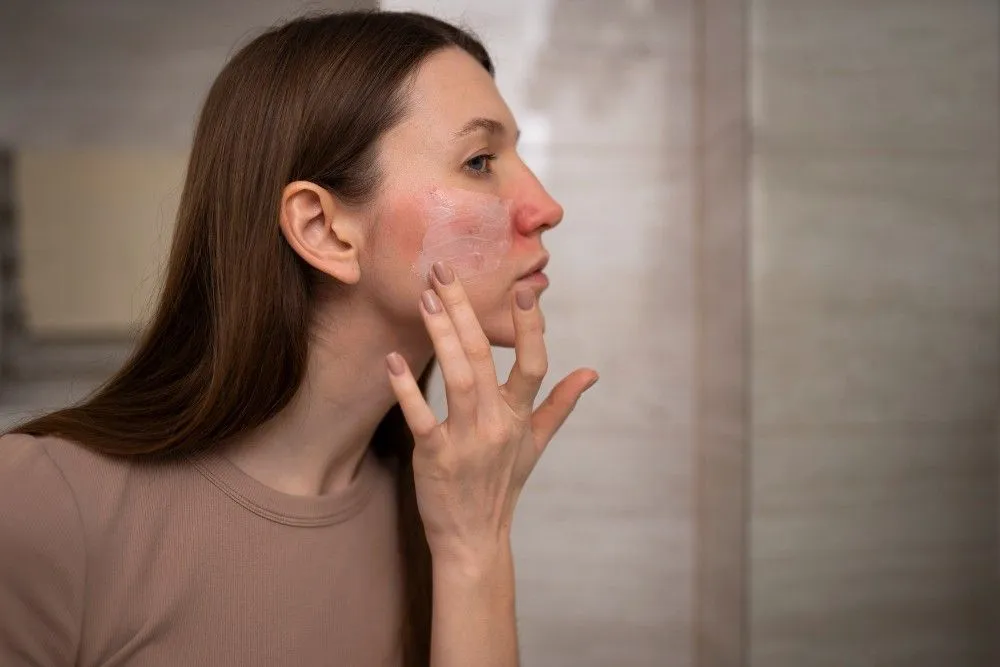The bacteria Staphylococcus aureus causes staph infections. There are many kinds of staph infections, as well as relying on the causative agent; doctors may treat them with antibiotics, surgical procedures, or other methods.
Mostly staph skin infections are treated quickly, but people with weakened immune systems are more vulnerable and may take longer to heal.
These bacteria are typically harmless; however, putting the body into an injured area, scrape, or snip can cause an infection and severe disease.
 Staphylococcus (or "staph") bacteria cause staph infections. Actually, approximately 25% of people have Staph in their mouth, nose, anal area, and genitals or do not have symptoms of infection.
The foot is also very susceptible to bacterial contamination from the floor. Infections frequently begin with a small cut that becomes infected with bacteria. On the skin, this can appear as honey-yellow crusting.
Staph infections can vary from a simple bring to a simmer to antibiotic-resistant infectious diseases and flesh-eating infections.
The difference is the severity of the infectious disease, how deep it goes, how quickly it propagates, and how fixable it is with antibiotics. Antibiotic-resistant infections are becoming more common in North America due to antibiotic overuse.
Staphylococcus (or "staph") bacteria cause staph infections. Actually, approximately 25% of people have Staph in their mouth, nose, anal area, and genitals or do not have symptoms of infection.
The foot is also very susceptible to bacterial contamination from the floor. Infections frequently begin with a small cut that becomes infected with bacteria. On the skin, this can appear as honey-yellow crusting.
Staph infections can vary from a simple bring to a simmer to antibiotic-resistant infectious diseases and flesh-eating infections.
The difference is the severity of the infectious disease, how deep it goes, how quickly it propagates, and how fixable it is with antibiotics. Antibiotic-resistant infections are becoming more common in North America due to antibiotic overuse.
 Staph bacteria are capable of causing a wide range of infections, including:
Staph bacteria are capable of causing a wide range of infections, including:
 Infection is triggered by staph bacteria that enter the body. They can enter the body through an infected sore or food infected with the bacteria.
Staph bacteria may enter a person's body:
Infection is triggered by staph bacteria that enter the body. They can enter the body through an infected sore or food infected with the bacteria.
Staph bacteria may enter a person's body:
 According to the type of infection, signs of a staph skin infections may include:
According to the type of infection, signs of a staph skin infections may include:
What is a Staph skin infection?
 Staphylococcus (or "staph") bacteria cause staph infections. Actually, approximately 25% of people have Staph in their mouth, nose, anal area, and genitals or do not have symptoms of infection.
The foot is also very susceptible to bacterial contamination from the floor. Infections frequently begin with a small cut that becomes infected with bacteria. On the skin, this can appear as honey-yellow crusting.
Staph infections can vary from a simple bring to a simmer to antibiotic-resistant infectious diseases and flesh-eating infections.
The difference is the severity of the infectious disease, how deep it goes, how quickly it propagates, and how fixable it is with antibiotics. Antibiotic-resistant infections are becoming more common in North America due to antibiotic overuse.
Staphylococcus (or "staph") bacteria cause staph infections. Actually, approximately 25% of people have Staph in their mouth, nose, anal area, and genitals or do not have symptoms of infection.
The foot is also very susceptible to bacterial contamination from the floor. Infections frequently begin with a small cut that becomes infected with bacteria. On the skin, this can appear as honey-yellow crusting.
Staph infections can vary from a simple bring to a simmer to antibiotic-resistant infectious diseases and flesh-eating infections.
The difference is the severity of the infectious disease, how deep it goes, how quickly it propagates, and how fixable it is with antibiotics. Antibiotic-resistant infections are becoming more common in North America due to antibiotic overuse.
What are the Types of staph skin infections?
 Staph bacteria are capable of causing a wide range of infections, including:
Staph bacteria are capable of causing a wide range of infections, including:
- Pneumonia
- Skin infections cause open sores
- Bacteremia is an infection of the bloodstream
- Endocarditis is an infectious disease of the heart's lining
- The infectious disease of the bone
- Poisoning from food
- Poisonous shock syndrome (TSS)
What are the Causes of staph skin infections?
 Infection is triggered by staph bacteria that enter the body. They can enter the body through an infected sore or food infected with the bacteria.
Staph bacteria may enter a person's body:
Infection is triggered by staph bacteria that enter the body. They can enter the body through an infected sore or food infected with the bacteria.
Staph bacteria may enter a person's body:
- Picking at sores, bumps, or pimples on the skin.
- In a circumstance that exposes them to a high level of bacteria, including surgical procedures or hospitalization.
- Getting bacteria from mutual surfaces, like gym equipment.
- Being in contact with someone who is infected with Staph.
- Sharing personal items with someone infected, such as makeup, razors, or towels.
- Sanitizing the surfaces regularly.
- Hands should be washed with warm water and soap.
- Clothes are dried in a hot drying chamber, which kills bacteria.
- Using dry, clean bandages, cover cuts, and scrapes.
What are the Symptoms of staph skin infections?
 According to the type of infection, signs of a staph skin infections may include:
According to the type of infection, signs of a staph skin infections may include:
#1. Skin infections
It can cause sores or bumps that swell or are painful. They could contain pus or other fluids, and a crust could form. Cellulitis can occur, causing the skin to become discolored and warm.#2. Bone infections
These infections can cause swelling, warmth, discoloration, and pain in the affected area. They are also capable of causing fever and chills.#3. Food poisoning
Food poisoning results in nausea, vomiting, diarrhea, fever, and possibly dehydration.#4. Pneumonia
A pulmonary infection that causes a cough, high fever, chills, shortness of breath, and possibly chest pain.#5. TSS
TSS causes a rapid drop in blood pressure, a high fever, vomiting, diarrhea, and confusion. A bad sunburn rash may also form.#6. Endocarditis
It is an infectious disease of the lining of the heart. It causes flu-like symptoms such as fever, fatigue, chills, a racing heart, and breathlessness. It can also result in fluid buildup in the legs and arms. If a doctor finds a staph infection, he or she will ask about the patient's symptoms and may perform a blood sample or customs of the damaged skin. If they presume Staph, individuals seek treatment as quickly as possible to prevent further illness. Also Read: What causes Shortness of breath after eating?What are the treatment options for staph skin infection?
- Antibiotics are prescribed to control staph infections. A doctor may prescribe the following medications regardless of the type of infection:
- Oral antibiotics, creams or ointments, and intravenous antibiotics are all options.
- A doctor will choose to drain pus from a skin staph infection. Surgery may be required for bone staph infections.
- People suffering from staph food-borne illnesses should consume lots of fluids to stay hydrated. Doctors do not prescribe antibiotics to detect staph food poisoning.
- Although severe illness is uncommon, a few people may prefer intravenous fluids to prevent dehydration caused by persistent vomiting or diarrhea.
- It is critical to see a general practitioner if illness occurs of a staph illness persists for more than a week or worsens rapidly. Anyone with a compromised immune system should seek medical attention before contracting an infection.
How is a Staph skin infection diagnosed?
Conduct a physical examination. Your provider will look for reddened areas or sore skin during the exam. Any other symptoms can also be discussed with your provider. Take samples for test results. Most staph infections are diagnosed by looking for bacteria in infected material, blood, skin, urine, or nasal secretions. Additional tests can assist your provider in selecting the antibiotic treatment that will be most effective against the bacteria. Other tests should be suggested. If you've been detected with infection, your doctor may recommend an echocardiogram. This test can determine whether the infection has impacted your heart. Your supplier may order additional imaging tests depending on the cause and the results.What are the Risk factors for staph skin infections?
Some people are predisposed to staph infections. These people include those who:- After surgery.
- Undergoing dialysis.
- Have a breathing tube, a feeding tube, or a catheter.
- Having a weak immune system.
- Inject drugs for fun.
- Have chronic illnesses such as eczema, diabetes, cancer, vascular disease, and
- lung disease.
- Skin-to-skin contact is required in contact sports.
Conclusion -
It is common for some persons to have staph bacteria on their skin and in their noses. Only after staph bacteria penetrate the body by a cut, wound, or tainted food can they cause problems. Staph skin infections can express themselves in a variety of ways. Skin infections are the most prevalent, and they might be slight and recover in a few days, or they can be serious and take a long time to heal. Staph infections can infect the bones, brain, heart, and other organs. To avoid problems, anybody experiencing signs of a staph infection should get treatment. Individuals with weaker immune systems should seek medical attention when they have an infection. Also Read: What Is the Difference Between a Bacterial and Viral Infection?
Reviewed by







